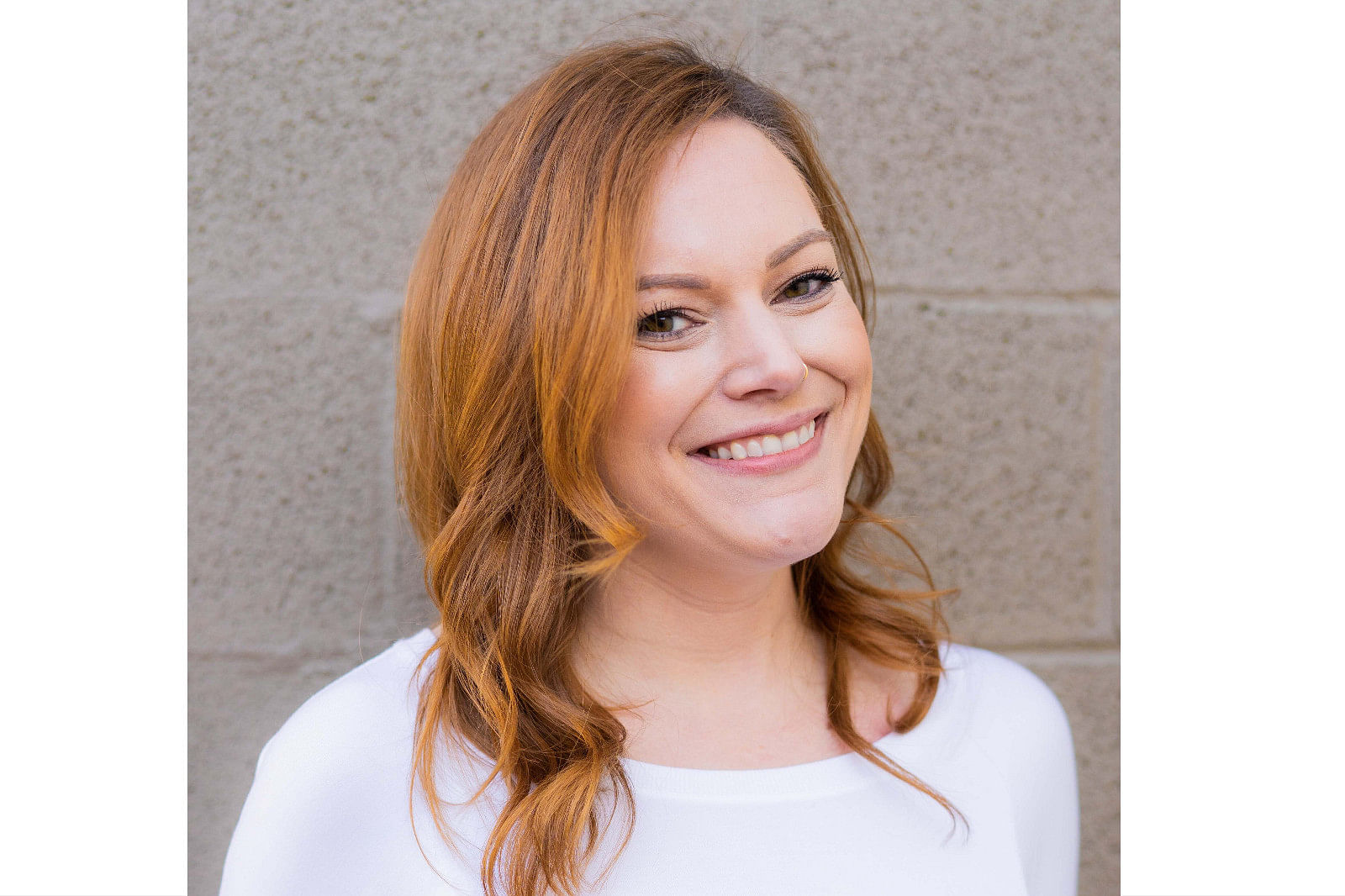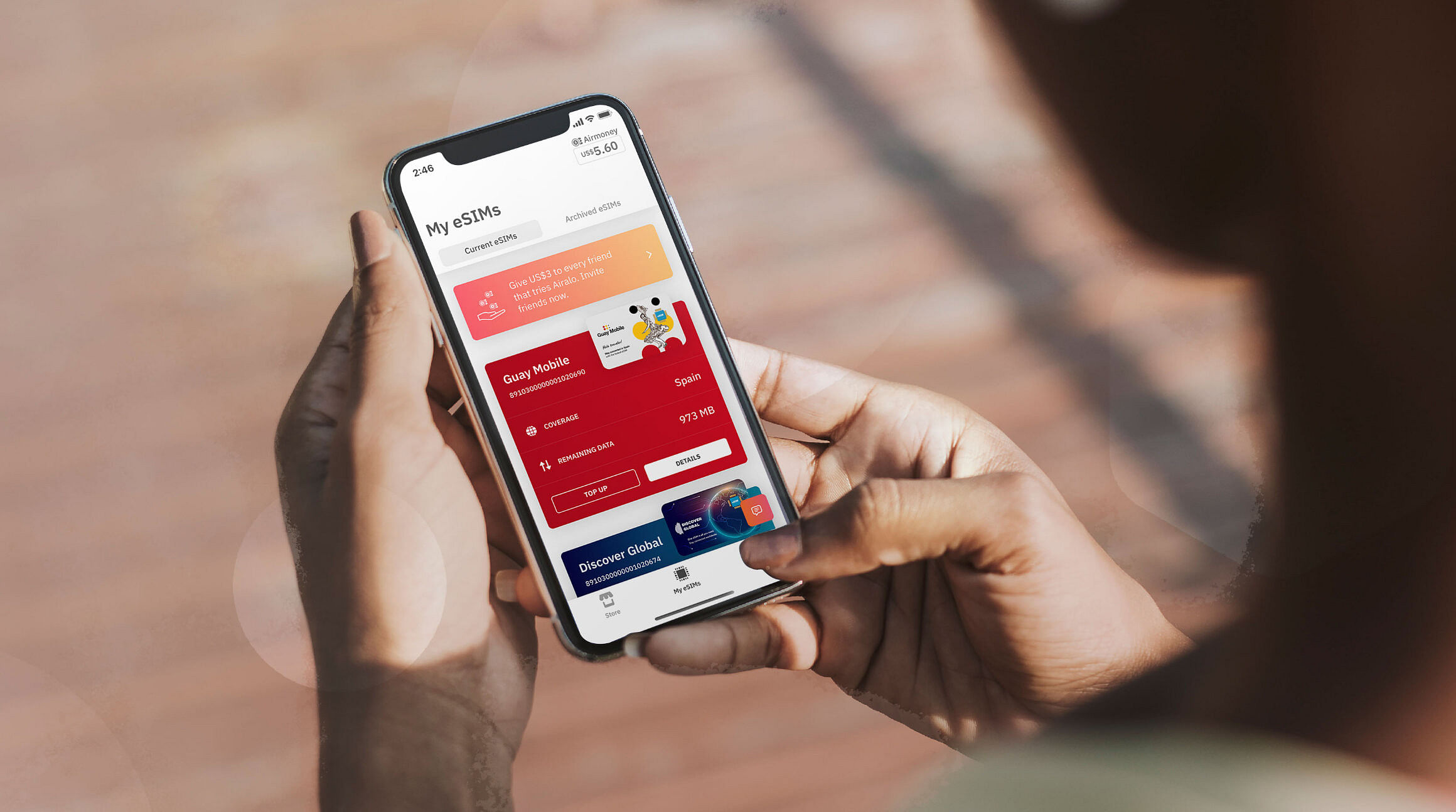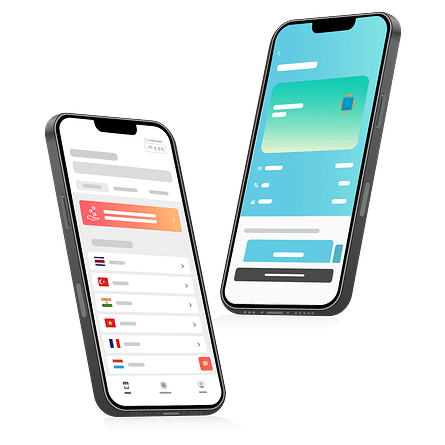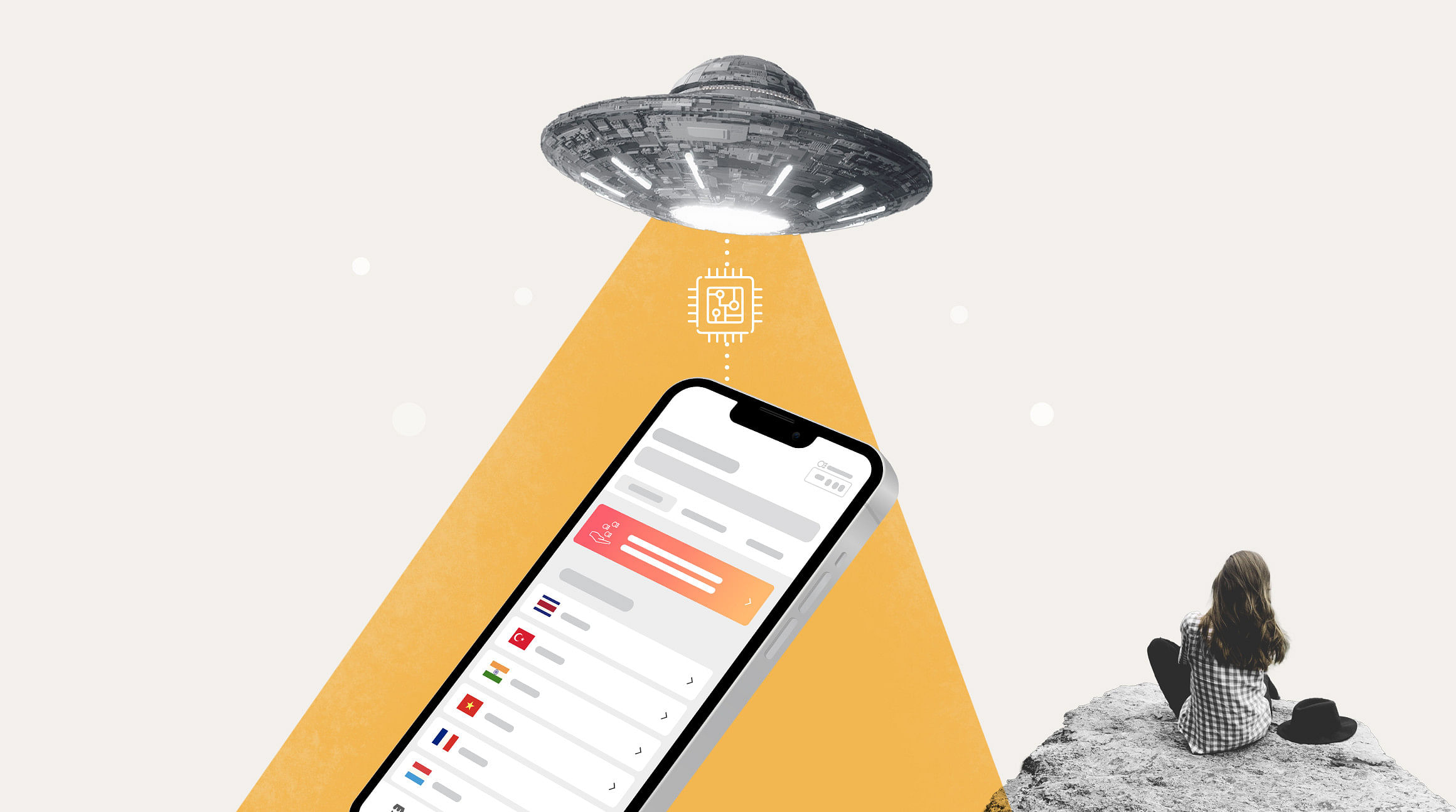
If you have a mobile phone, you're probably familiar with the SIM card. It's the tiny chip you insert into your device to get cellular service. But did you know there's a digital version? An eSIM is an embedded chip that does all the same things as a physical SIM but works 100% digitally.
In this article, we'll explore the ins and outs of eSIM technology and how you can switch from a SIM card to an eSIM on your iPhone.
You'll learn:
- What is an eSIM?
- The difference between eSIMs vs. physical SIMs
- Why switch to eSIM?
- Is your iPhone eSIM-compatible?
- 3 ways to switch from SIM to eSIM on iPhone
- How to use an eSIM and SIM card together
What Is an eSIM?
First up: What is an eSIM? eSIM stands for "embedded SIM" — a reprogrammable chip that's built into your device during manufacturing. An eSIM works 100% digitally, and you don't need to swap it out to activate a cellular plan. Instead, you can install an eSIM profile and connect to a carrier's network in minutes. It's that easy!
What's the Difference Between eSIMs vs. Physical SIMs?
You can think of an eSIM as a digital SIM card. It serves the same purpose as a physical SIM – they both identify you as a mobile subscriber and connect you to a carrier's network — but it works 100% digitally.
Here's a closer look at some other key differences between eSIMs and physical SIMs:
| Physical SIM Cards | eSIMs (Embedded SIMs) |
|---|---|
| Removable. You need to remove and insert a new one to switch carriers. | Embedded. You can install an eSIM profile and switch carriers 100% digitally. |
| Tied to a carrier. It's linked to a cellular plan from a mobile provider. Additional plans usually need to be from that same carrier. | Carrier-independent. It isn't linked to a specific carrier — you can have multiple cellular plans on one device. |
| Max. two SIM cards per device. iPhone 12 and later allow for two nano SIMs. Earlier models only allow for one SIM at a time. | Up to eight eSIM profiles per device. iPhone XS and later models allow you to store up to eight eSIM profiles, with two active at once.* |
| Easy to lose/steal. A removable chip is easy to misplace or steal. | More secure. An embedded chip can't be physically removed from your device. |
| Less Sustainable. Physical SIM cards require more energy and plastic to produce and distribute. | Environmentally-friendly. eSIMs are even smaller than a nano SIM and don't require packaging and delivery materials. |
*Keep in mind this depends on your mobile provider and the country or region where you purchased your eSIM. Not all iPhones are eSIM-compatible.
Why Switch from a Physical SIM to an eSIM?
eSIMs make cellular connectivity super simple. You can buy, install, and manage up to eight eSIM profiles right from your iPhone. There's no need to visit a mobile retailer, wait for your carrier to send you a new SIM card, or swap physical SIMs to get service.
Consider the steps it takes to activate a cellular plan with a physical SIM card vs. an eSIM:
Steps to Activate a SIM Card
- Contact your carrier or visit a mobile retailer to purchase a cellular plan.
- Wait to receive a new SIM card by mail or get a new one in person.
- Use an ejector tool to remove your old SIM card.
- Insert your new SIM card into the SIM tray.
- Turn on your iPhone and connect to a cellular network.
Steps to Activate an eSIM
- Get an eSIM from your mobile carrier or an eSIM provider.
- Install and activate the eSIM on your iPhone.
- Instantly connect to a mobile network.
Sounds good, right? If you're after an easier, more convenient way to stay connected, switching to an eSIM is a no-brainer.
Is Your iPhone eSIM-Compatible?
Ready to make the switch? Great choice! First, you'll need to ensure your iPhone supports eSIM technology. You can dive into your iPhone's settings to find out:
- Go to Settings > General > About.
- Scroll down to view the Carrier Lock section.
- If your device is unlocked, it will show "No SIM restrictions."
- Scroll down to Available SIM (iOS 15 or later) or Digital SIM (earlier iOS versions).
- If your phone supports eSIMs, it will show a 15-digit IMEI number.
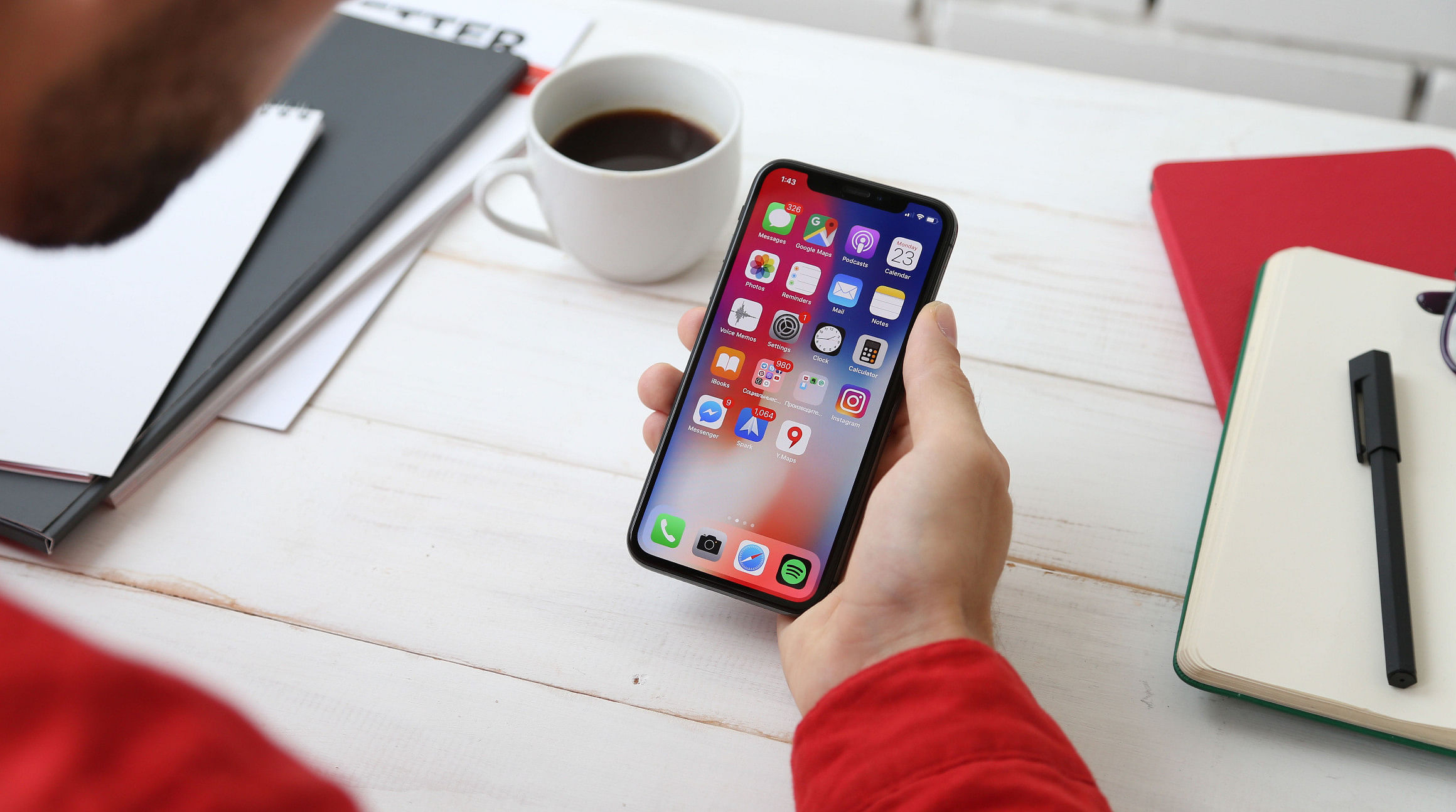 Unsplash
Unsplash
How To Switch From Physical SIM to eSIM on iPhone
If your phone supports eSIM technology, you're all set to go digital! Here are three ways to switch from a physical SIM to an eSIM on iPhone.
Option 1: Convert Your Physical SIM to an eSIM
This is the best option if you're midway through a contract with your mobile provider. In this case, you can use Apple's Quick Transfer method to convert your physical SIM to an eSIM.
Here's how to do it:
- Go to Settings > Cellular.
- Tap Convert to eSIM (if you don't see this option, your carrier doesn't support converting a SIM to an eSIM).
- Tap Convert Cellular Plan.
- Tap Convert to eSIM.
- Wait for your eSIM to activate.
- Remove your physical SIM (it will deactivate when the eSIM activates).
- Restart your iPhone.
Option 2: Activate an eSIM From Your Carrier
Suppose you're starting a new contract or purchasing a new device. In that case, your carrier can use Apple's eSIM Carrier Activation method to assign an eSIM to your iPhone. Here's how it works.
If you're purchasing a new iPhone:
- Turn on your device.
- Follow the step-by-step installation instructions.
If you already have an iPhone:
- Scan the QR code provided by your carrier.
- Follow the steps to install the eSIM.
Remember, if your eSIM plan replaces the plan on your physical SIM, you'll need to remove it and restart your iPhone.
Option 3: Buy an eSIM from an eSIM Provider
Another option is to buy an eSIM from a third-party provider (like us!). Airalo is an eSIM store that gives you access to local, regional, and global eSIMs for 200+ countries and regions worldwide. This is the ideal solution if you're planning a trip and need to stay connected abroad.
Here's how to get started with Airalo:
- Download the Airalo app (iOS | Android) or visit the Airalo website.
- Buy an eSIM for your destination (Airalo has eSIMs for 200+ countries and regions worldwide).
- Follow the step-by-step installation instructions.
- Turn on your eSIM when you arrive at your destination.
- Instantly connect to a local network.
You can manage your eSIMs on the Airalo app or website. We make it easy to purchase and install new eSIM profiles, track and top up your eSIM data, and more — right from your iPhone!
Related: Using Your Airalo eSIM: 8 App Features to Know
 Unsplash
Unsplash
Using an eSIM and Physical SIM Together
Curious if you can use an eSIM and SIM card together? Guess what: You can! iPhones are equipped with Dual SIM technology, which enables you to store more than one SIM and/or eSIM on your device. With a Dual SIM iPhone, you can:
- Store up to eight eSIM profiles on your iPhone for easy switching when you travel.
- Use one plan for calls and texts and another one for data.
- Maintain separate business and personal lines on the same phone.
- Continue to use your primary number for two-factor authentication notifications.
Remember, you can only have two lines active at one time. And if you're locked into a contract, your plans must be from the same cellular service provider. If your iPhone is carrier-unlocked, you can purchase an eSIM package from any provider you choose!
Ready to go digital? Download the Airalo app (App Store | Google Play Store) or visit our website to find your next eSIM!

